Financial Management: Finance and Funding in Travel & Tourism Report
VerifiedAdded on 2023/03/22
|18
|3318
|21
Report
AI Summary
This report provides a comprehensive analysis of finance and funding within the travel and tourism sector. It begins by highlighting the significance of costs, volume, and profit, exploring various pricing methods like seasonal and cost-plus pricing, and examining factors influencing the industry such as political, economic, social, technological, legal, environmental, and seasonal variations. The report delves into cost management, including indirect, direct, and fixed costs, along with the allocation of overheads and break-even analysis. Furthermore, it interprets financial accounts, including cash flow statements, trading accounts, profit and loss accounts, and balance sheets, to aid in informed decision-making. The report also outlines sources of funding essential for the growth and development of tourism projects, offering a complete overview of financial strategies in this dynamic sector.
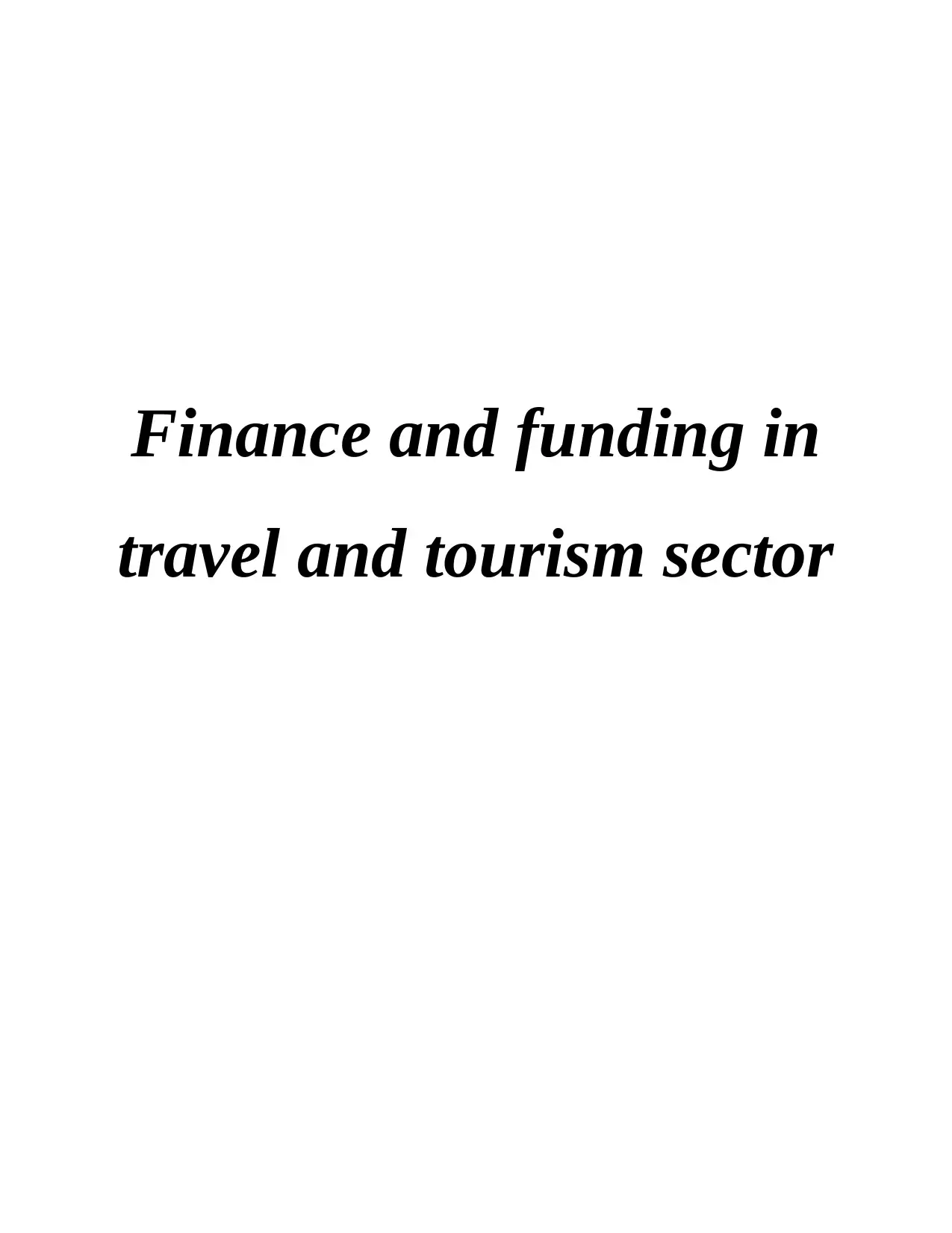
Finance and funding in
travel and tourism sector
travel and tourism sector
Paraphrase This Document
Need a fresh take? Get an instant paraphrase of this document with our AI Paraphraser
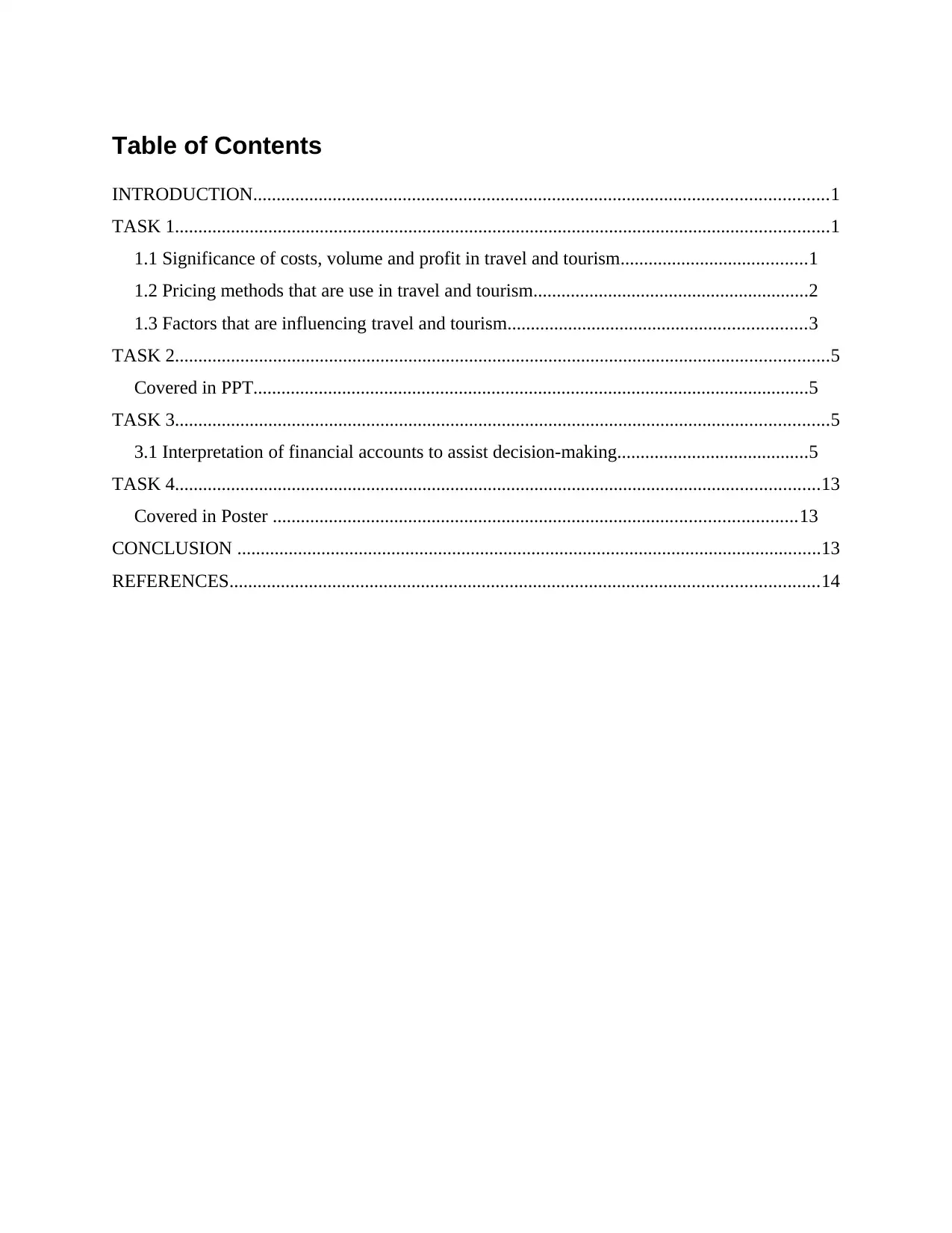
Table of Contents
INTRODUCTION...........................................................................................................................1
TASK 1............................................................................................................................................1
1.1 Significance of costs, volume and profit in travel and tourism........................................1
1.2 Pricing methods that are use in travel and tourism...........................................................2
1.3 Factors that are influencing travel and tourism................................................................3
TASK 2............................................................................................................................................5
Covered in PPT.......................................................................................................................5
TASK 3............................................................................................................................................5
3.1 Interpretation of financial accounts to assist decision-making.........................................5
TASK 4..........................................................................................................................................13
Covered in Poster ................................................................................................................13
CONCLUSION .............................................................................................................................13
REFERENCES..............................................................................................................................14
INTRODUCTION...........................................................................................................................1
TASK 1............................................................................................................................................1
1.1 Significance of costs, volume and profit in travel and tourism........................................1
1.2 Pricing methods that are use in travel and tourism...........................................................2
1.3 Factors that are influencing travel and tourism................................................................3
TASK 2............................................................................................................................................5
Covered in PPT.......................................................................................................................5
TASK 3............................................................................................................................................5
3.1 Interpretation of financial accounts to assist decision-making.........................................5
TASK 4..........................................................................................................................................13
Covered in Poster ................................................................................................................13
CONCLUSION .............................................................................................................................13
REFERENCES..............................................................................................................................14
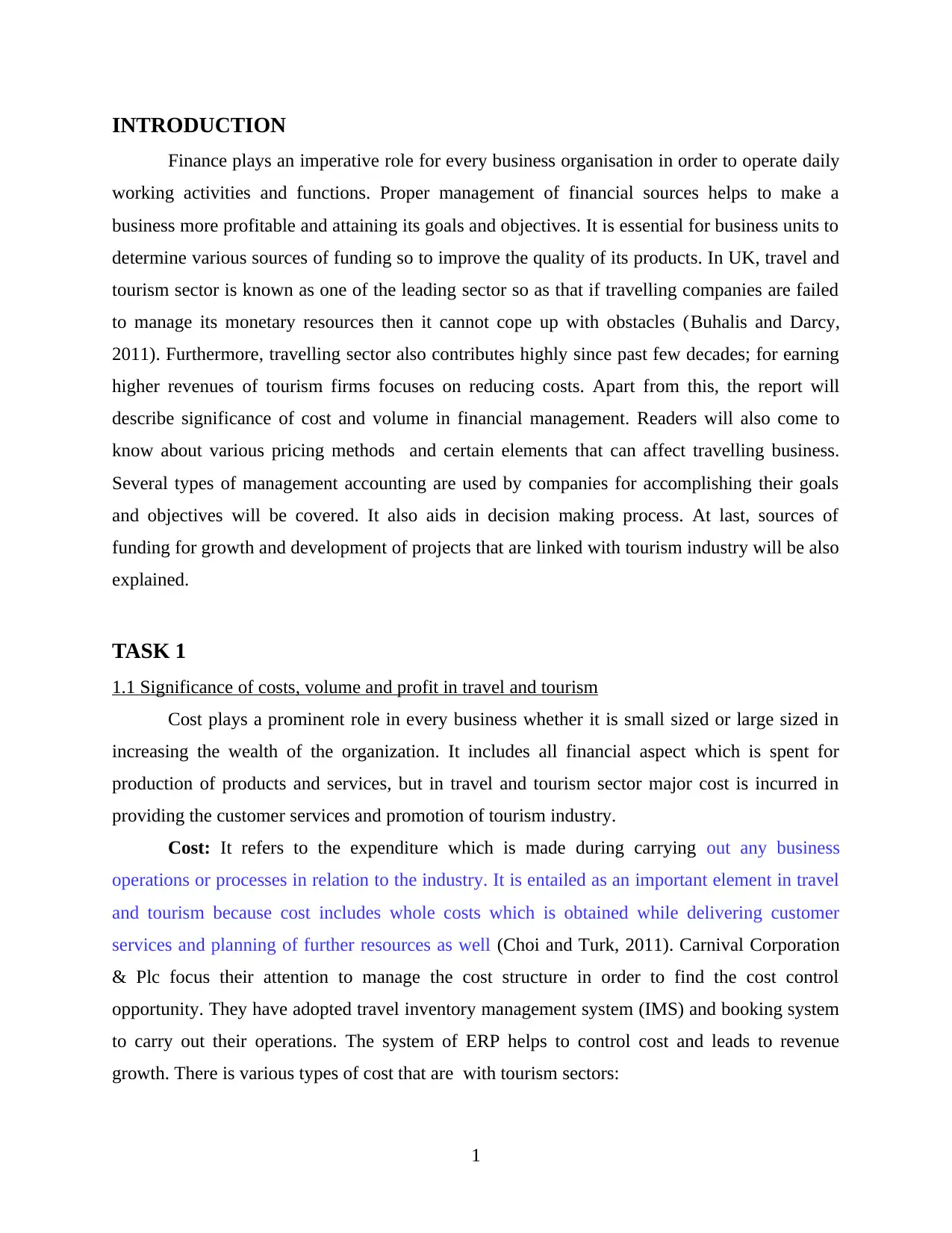
INTRODUCTION
Finance plays an imperative role for every business organisation in order to operate daily
working activities and functions. Proper management of financial sources helps to make a
business more profitable and attaining its goals and objectives. It is essential for business units to
determine various sources of funding so to improve the quality of its products. In UK, travel and
tourism sector is known as one of the leading sector so as that if travelling companies are failed
to manage its monetary resources then it cannot cope up with obstacles (Buhalis and Darcy,
2011). Furthermore, travelling sector also contributes highly since past few decades; for earning
higher revenues of tourism firms focuses on reducing costs. Apart from this, the report will
describe significance of cost and volume in financial management. Readers will also come to
know about various pricing methods and certain elements that can affect travelling business.
Several types of management accounting are used by companies for accomplishing their goals
and objectives will be covered. It also aids in decision making process. At last, sources of
funding for growth and development of projects that are linked with tourism industry will be also
explained.
TASK 1
1.1 Significance of costs, volume and profit in travel and tourism
Cost plays a prominent role in every business whether it is small sized or large sized in
increasing the wealth of the organization. It includes all financial aspect which is spent for
production of products and services, but in travel and tourism sector major cost is incurred in
providing the customer services and promotion of tourism industry.
Cost: It refers to the expenditure which is made during carrying out any business
operations or processes in relation to the industry. It is entailed as an important element in travel
and tourism because cost includes whole costs which is obtained while delivering customer
services and planning of further resources as well (Choi and Turk, 2011). Carnival Corporation
& Plc focus their attention to manage the cost structure in order to find the cost control
opportunity. They have adopted travel inventory management system (IMS) and booking system
to carry out their operations. The system of ERP helps to control cost and leads to revenue
growth. There is various types of cost that are with tourism sectors:
1
Finance plays an imperative role for every business organisation in order to operate daily
working activities and functions. Proper management of financial sources helps to make a
business more profitable and attaining its goals and objectives. It is essential for business units to
determine various sources of funding so to improve the quality of its products. In UK, travel and
tourism sector is known as one of the leading sector so as that if travelling companies are failed
to manage its monetary resources then it cannot cope up with obstacles (Buhalis and Darcy,
2011). Furthermore, travelling sector also contributes highly since past few decades; for earning
higher revenues of tourism firms focuses on reducing costs. Apart from this, the report will
describe significance of cost and volume in financial management. Readers will also come to
know about various pricing methods and certain elements that can affect travelling business.
Several types of management accounting are used by companies for accomplishing their goals
and objectives will be covered. It also aids in decision making process. At last, sources of
funding for growth and development of projects that are linked with tourism industry will be also
explained.
TASK 1
1.1 Significance of costs, volume and profit in travel and tourism
Cost plays a prominent role in every business whether it is small sized or large sized in
increasing the wealth of the organization. It includes all financial aspect which is spent for
production of products and services, but in travel and tourism sector major cost is incurred in
providing the customer services and promotion of tourism industry.
Cost: It refers to the expenditure which is made during carrying out any business
operations or processes in relation to the industry. It is entailed as an important element in travel
and tourism because cost includes whole costs which is obtained while delivering customer
services and planning of further resources as well (Choi and Turk, 2011). Carnival Corporation
& Plc focus their attention to manage the cost structure in order to find the cost control
opportunity. They have adopted travel inventory management system (IMS) and booking system
to carry out their operations. The system of ERP helps to control cost and leads to revenue
growth. There is various types of cost that are with tourism sectors:
1
⊘ This is a preview!⊘
Do you want full access?
Subscribe today to unlock all pages.

Trusted by 1+ million students worldwide
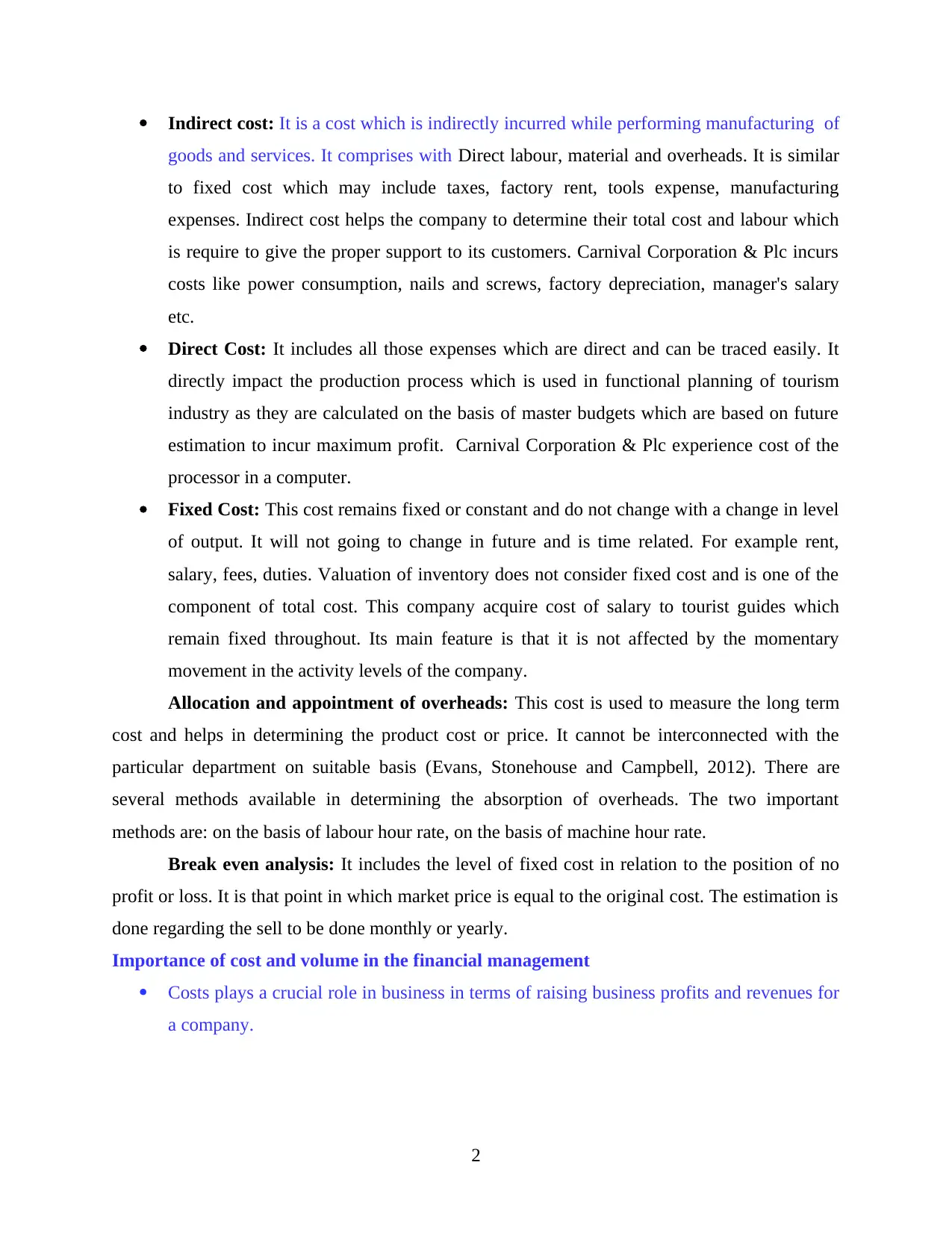
Indirect cost: It is a cost which is indirectly incurred while performing manufacturing of
goods and services. It comprises with Direct labour, material and overheads. It is similar
to fixed cost which may include taxes, factory rent, tools expense, manufacturing
expenses. Indirect cost helps the company to determine their total cost and labour which
is require to give the proper support to its customers. Carnival Corporation & Plc incurs
costs like power consumption, nails and screws, factory depreciation, manager's salary
etc.
Direct Cost: It includes all those expenses which are direct and can be traced easily. It
directly impact the production process which is used in functional planning of tourism
industry as they are calculated on the basis of master budgets which are based on future
estimation to incur maximum profit. Carnival Corporation & Plc experience cost of the
processor in a computer.
Fixed Cost: This cost remains fixed or constant and do not change with a change in level
of output. It will not going to change in future and is time related. For example rent,
salary, fees, duties. Valuation of inventory does not consider fixed cost and is one of the
component of total cost. This company acquire cost of salary to tourist guides which
remain fixed throughout. Its main feature is that it is not affected by the momentary
movement in the activity levels of the company.
Allocation and appointment of overheads: This cost is used to measure the long term
cost and helps in determining the product cost or price. It cannot be interconnected with the
particular department on suitable basis (Evans, Stonehouse and Campbell, 2012). There are
several methods available in determining the absorption of overheads. The two important
methods are: on the basis of labour hour rate, on the basis of machine hour rate.
Break even analysis: It includes the level of fixed cost in relation to the position of no
profit or loss. It is that point in which market price is equal to the original cost. The estimation is
done regarding the sell to be done monthly or yearly.
Importance of cost and volume in the financial management
Costs plays a crucial role in business in terms of raising business profits and revenues for
a company.
2
goods and services. It comprises with Direct labour, material and overheads. It is similar
to fixed cost which may include taxes, factory rent, tools expense, manufacturing
expenses. Indirect cost helps the company to determine their total cost and labour which
is require to give the proper support to its customers. Carnival Corporation & Plc incurs
costs like power consumption, nails and screws, factory depreciation, manager's salary
etc.
Direct Cost: It includes all those expenses which are direct and can be traced easily. It
directly impact the production process which is used in functional planning of tourism
industry as they are calculated on the basis of master budgets which are based on future
estimation to incur maximum profit. Carnival Corporation & Plc experience cost of the
processor in a computer.
Fixed Cost: This cost remains fixed or constant and do not change with a change in level
of output. It will not going to change in future and is time related. For example rent,
salary, fees, duties. Valuation of inventory does not consider fixed cost and is one of the
component of total cost. This company acquire cost of salary to tourist guides which
remain fixed throughout. Its main feature is that it is not affected by the momentary
movement in the activity levels of the company.
Allocation and appointment of overheads: This cost is used to measure the long term
cost and helps in determining the product cost or price. It cannot be interconnected with the
particular department on suitable basis (Evans, Stonehouse and Campbell, 2012). There are
several methods available in determining the absorption of overheads. The two important
methods are: on the basis of labour hour rate, on the basis of machine hour rate.
Break even analysis: It includes the level of fixed cost in relation to the position of no
profit or loss. It is that point in which market price is equal to the original cost. The estimation is
done regarding the sell to be done monthly or yearly.
Importance of cost and volume in the financial management
Costs plays a crucial role in business in terms of raising business profits and revenues for
a company.
2
Paraphrase This Document
Need a fresh take? Get an instant paraphrase of this document with our AI Paraphraser
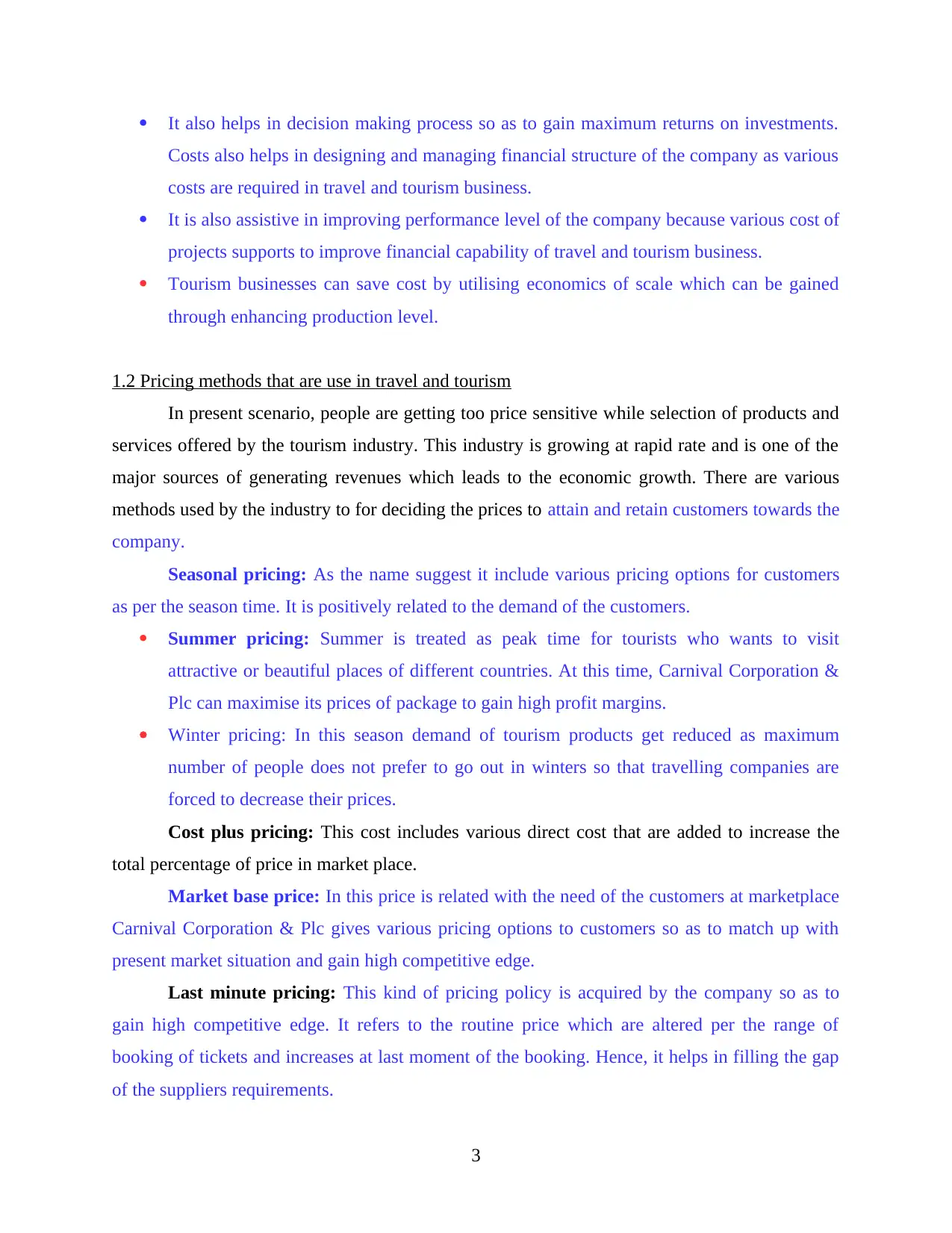
It also helps in decision making process so as to gain maximum returns on investments.
Costs also helps in designing and managing financial structure of the company as various
costs are required in travel and tourism business.
It is also assistive in improving performance level of the company because various cost of
projects supports to improve financial capability of travel and tourism business.
Tourism businesses can save cost by utilising economics of scale which can be gained
through enhancing production level.
1.2 Pricing methods that are use in travel and tourism
In present scenario, people are getting too price sensitive while selection of products and
services offered by the tourism industry. This industry is growing at rapid rate and is one of the
major sources of generating revenues which leads to the economic growth. There are various
methods used by the industry to for deciding the prices to attain and retain customers towards the
company.
Seasonal pricing: As the name suggest it include various pricing options for customers
as per the season time. It is positively related to the demand of the customers.
Summer pricing: Summer is treated as peak time for tourists who wants to visit
attractive or beautiful places of different countries. At this time, Carnival Corporation &
Plc can maximise its prices of package to gain high profit margins.
Winter pricing: In this season demand of tourism products get reduced as maximum
number of people does not prefer to go out in winters so that travelling companies are
forced to decrease their prices.
Cost plus pricing: This cost includes various direct cost that are added to increase the
total percentage of price in market place.
Market base price: In this price is related with the need of the customers at marketplace
Carnival Corporation & Plc gives various pricing options to customers so as to match up with
present market situation and gain high competitive edge.
Last minute pricing: This kind of pricing policy is acquired by the company so as to
gain high competitive edge. It refers to the routine price which are altered per the range of
booking of tickets and increases at last moment of the booking. Hence, it helps in filling the gap
of the suppliers requirements.
3
Costs also helps in designing and managing financial structure of the company as various
costs are required in travel and tourism business.
It is also assistive in improving performance level of the company because various cost of
projects supports to improve financial capability of travel and tourism business.
Tourism businesses can save cost by utilising economics of scale which can be gained
through enhancing production level.
1.2 Pricing methods that are use in travel and tourism
In present scenario, people are getting too price sensitive while selection of products and
services offered by the tourism industry. This industry is growing at rapid rate and is one of the
major sources of generating revenues which leads to the economic growth. There are various
methods used by the industry to for deciding the prices to attain and retain customers towards the
company.
Seasonal pricing: As the name suggest it include various pricing options for customers
as per the season time. It is positively related to the demand of the customers.
Summer pricing: Summer is treated as peak time for tourists who wants to visit
attractive or beautiful places of different countries. At this time, Carnival Corporation &
Plc can maximise its prices of package to gain high profit margins.
Winter pricing: In this season demand of tourism products get reduced as maximum
number of people does not prefer to go out in winters so that travelling companies are
forced to decrease their prices.
Cost plus pricing: This cost includes various direct cost that are added to increase the
total percentage of price in market place.
Market base price: In this price is related with the need of the customers at marketplace
Carnival Corporation & Plc gives various pricing options to customers so as to match up with
present market situation and gain high competitive edge.
Last minute pricing: This kind of pricing policy is acquired by the company so as to
gain high competitive edge. It refers to the routine price which are altered per the range of
booking of tickets and increases at last moment of the booking. Hence, it helps in filling the gap
of the suppliers requirements.
3
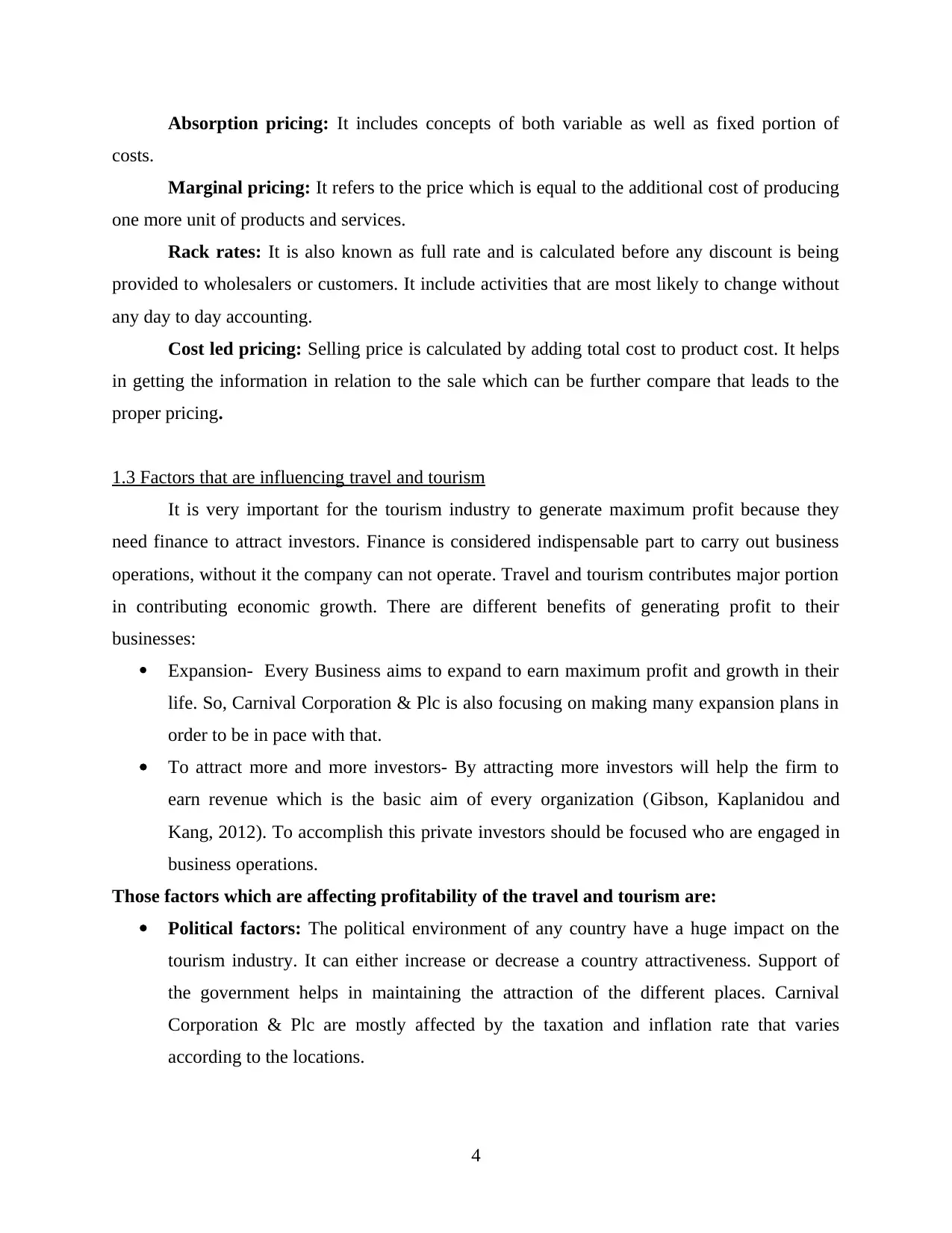
Absorption pricing: It includes concepts of both variable as well as fixed portion of
costs.
Marginal pricing: It refers to the price which is equal to the additional cost of producing
one more unit of products and services.
Rack rates: It is also known as full rate and is calculated before any discount is being
provided to wholesalers or customers. It include activities that are most likely to change without
any day to day accounting.
Cost led pricing: Selling price is calculated by adding total cost to product cost. It helps
in getting the information in relation to the sale which can be further compare that leads to the
proper pricing.
1.3 Factors that are influencing travel and tourism
It is very important for the tourism industry to generate maximum profit because they
need finance to attract investors. Finance is considered indispensable part to carry out business
operations, without it the company can not operate. Travel and tourism contributes major portion
in contributing economic growth. There are different benefits of generating profit to their
businesses:
Expansion- Every Business aims to expand to earn maximum profit and growth in their
life. So, Carnival Corporation & Plc is also focusing on making many expansion plans in
order to be in pace with that.
To attract more and more investors- By attracting more investors will help the firm to
earn revenue which is the basic aim of every organization (Gibson, Kaplanidou and
Kang, 2012). To accomplish this private investors should be focused who are engaged in
business operations.
Those factors which are affecting profitability of the travel and tourism are:
Political factors: The political environment of any country have a huge impact on the
tourism industry. It can either increase or decrease a country attractiveness. Support of
the government helps in maintaining the attraction of the different places. Carnival
Corporation & Plc are mostly affected by the taxation and inflation rate that varies
according to the locations.
4
costs.
Marginal pricing: It refers to the price which is equal to the additional cost of producing
one more unit of products and services.
Rack rates: It is also known as full rate and is calculated before any discount is being
provided to wholesalers or customers. It include activities that are most likely to change without
any day to day accounting.
Cost led pricing: Selling price is calculated by adding total cost to product cost. It helps
in getting the information in relation to the sale which can be further compare that leads to the
proper pricing.
1.3 Factors that are influencing travel and tourism
It is very important for the tourism industry to generate maximum profit because they
need finance to attract investors. Finance is considered indispensable part to carry out business
operations, without it the company can not operate. Travel and tourism contributes major portion
in contributing economic growth. There are different benefits of generating profit to their
businesses:
Expansion- Every Business aims to expand to earn maximum profit and growth in their
life. So, Carnival Corporation & Plc is also focusing on making many expansion plans in
order to be in pace with that.
To attract more and more investors- By attracting more investors will help the firm to
earn revenue which is the basic aim of every organization (Gibson, Kaplanidou and
Kang, 2012). To accomplish this private investors should be focused who are engaged in
business operations.
Those factors which are affecting profitability of the travel and tourism are:
Political factors: The political environment of any country have a huge impact on the
tourism industry. It can either increase or decrease a country attractiveness. Support of
the government helps in maintaining the attraction of the different places. Carnival
Corporation & Plc are mostly affected by the taxation and inflation rate that varies
according to the locations.
4
⊘ This is a preview!⊘
Do you want full access?
Subscribe today to unlock all pages.

Trusted by 1+ million students worldwide
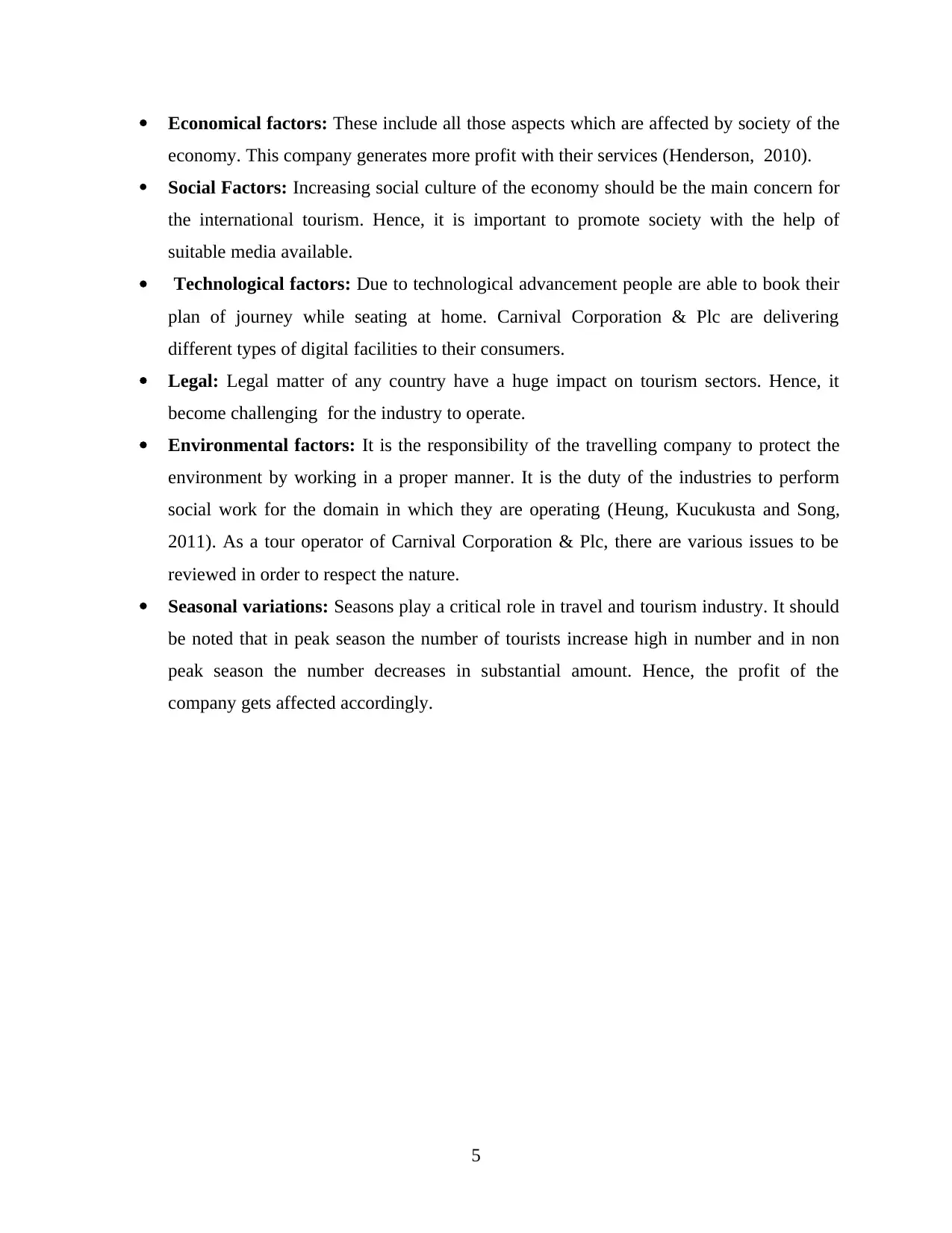
Economical factors: These include all those aspects which are affected by society of the
economy. This company generates more profit with their services (Henderson, 2010).
Social Factors: Increasing social culture of the economy should be the main concern for
the international tourism. Hence, it is important to promote society with the help of
suitable media available.
Technological factors: Due to technological advancement people are able to book their
plan of journey while seating at home. Carnival Corporation & Plc are delivering
different types of digital facilities to their consumers.
Legal: Legal matter of any country have a huge impact on tourism sectors. Hence, it
become challenging for the industry to operate.
Environmental factors: It is the responsibility of the travelling company to protect the
environment by working in a proper manner. It is the duty of the industries to perform
social work for the domain in which they are operating (Heung, Kucukusta and Song,
2011). As a tour operator of Carnival Corporation & Plc, there are various issues to be
reviewed in order to respect the nature.
Seasonal variations: Seasons play a critical role in travel and tourism industry. It should
be noted that in peak season the number of tourists increase high in number and in non
peak season the number decreases in substantial amount. Hence, the profit of the
company gets affected accordingly.
5
economy. This company generates more profit with their services (Henderson, 2010).
Social Factors: Increasing social culture of the economy should be the main concern for
the international tourism. Hence, it is important to promote society with the help of
suitable media available.
Technological factors: Due to technological advancement people are able to book their
plan of journey while seating at home. Carnival Corporation & Plc are delivering
different types of digital facilities to their consumers.
Legal: Legal matter of any country have a huge impact on tourism sectors. Hence, it
become challenging for the industry to operate.
Environmental factors: It is the responsibility of the travelling company to protect the
environment by working in a proper manner. It is the duty of the industries to perform
social work for the domain in which they are operating (Heung, Kucukusta and Song,
2011). As a tour operator of Carnival Corporation & Plc, there are various issues to be
reviewed in order to respect the nature.
Seasonal variations: Seasons play a critical role in travel and tourism industry. It should
be noted that in peak season the number of tourists increase high in number and in non
peak season the number decreases in substantial amount. Hence, the profit of the
company gets affected accordingly.
5
Paraphrase This Document
Need a fresh take? Get an instant paraphrase of this document with our AI Paraphraser
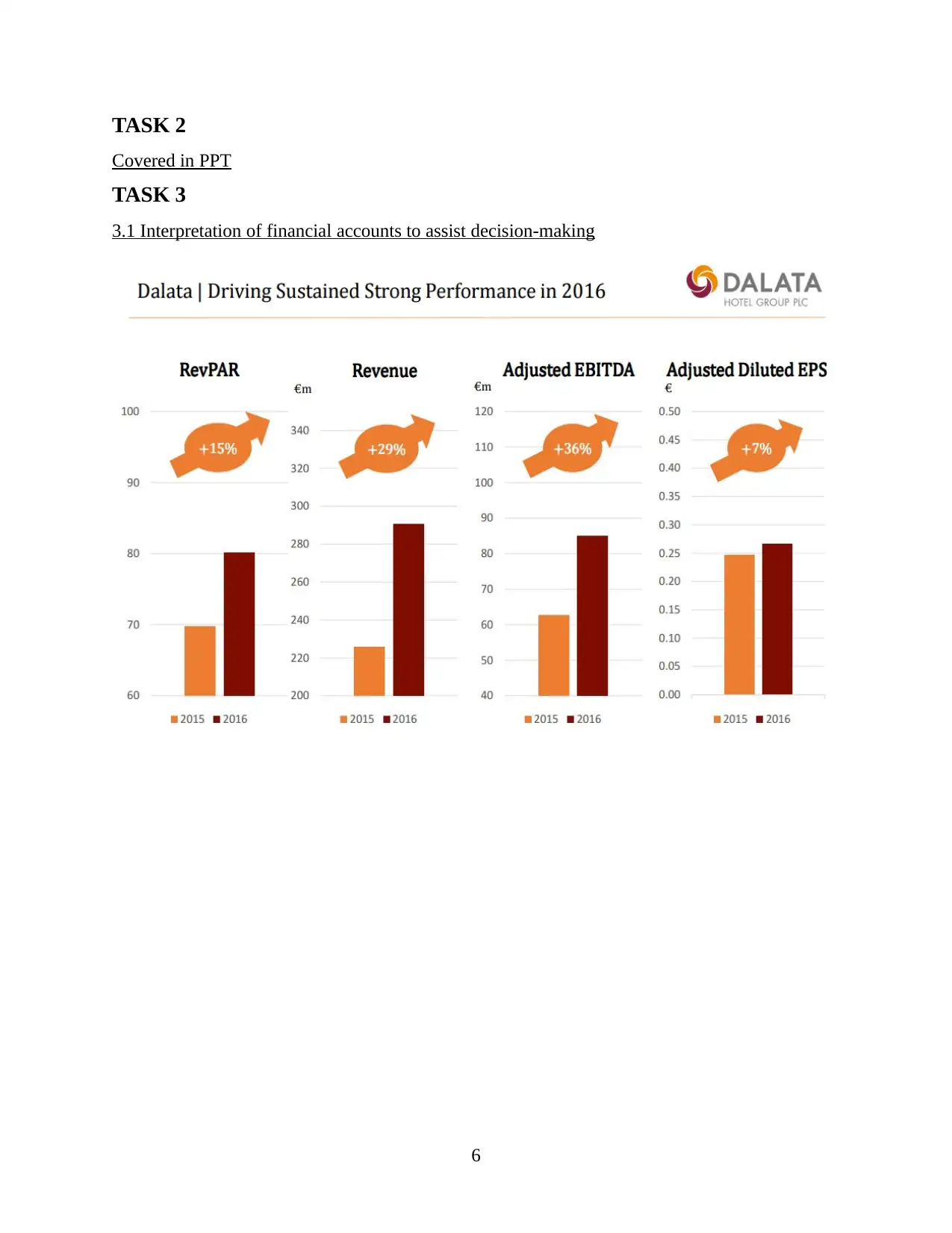
TASK 2
Covered in PPT
TASK 3
3.1 Interpretation of financial accounts to assist decision-making
6
Covered in PPT
TASK 3
3.1 Interpretation of financial accounts to assist decision-making
6
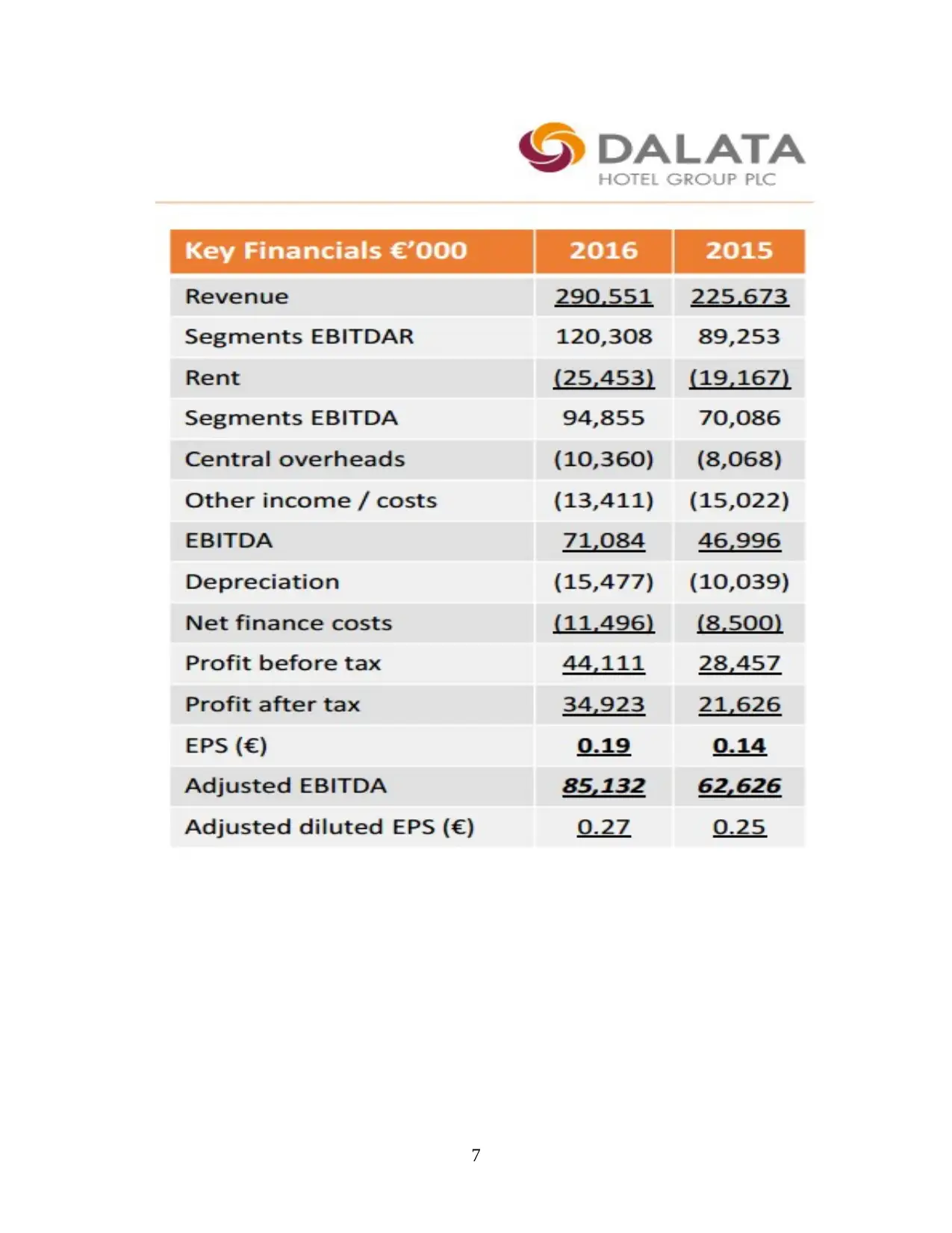
7
⊘ This is a preview!⊘
Do you want full access?
Subscribe today to unlock all pages.

Trusted by 1+ million students worldwide
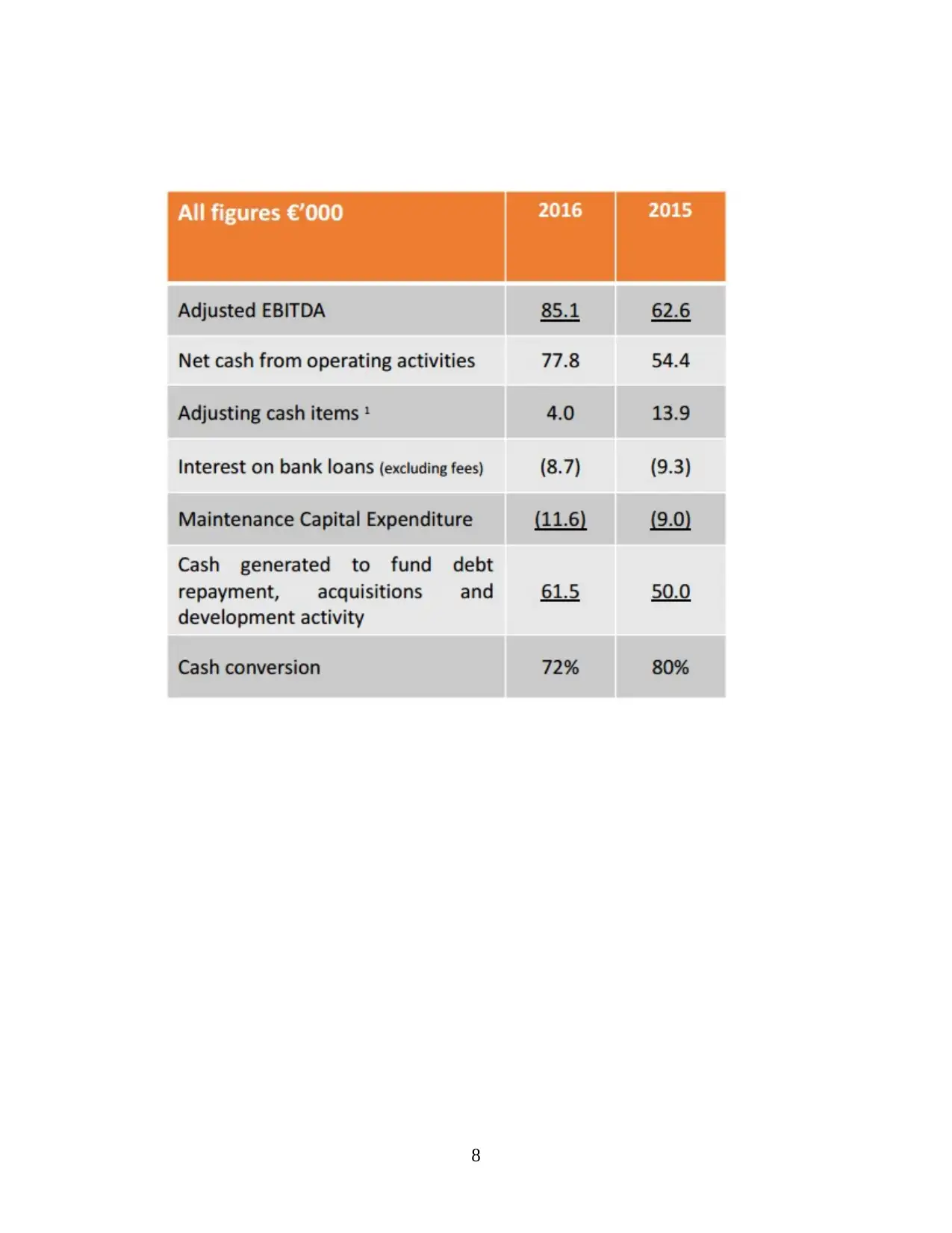
8
Paraphrase This Document
Need a fresh take? Get an instant paraphrase of this document with our AI Paraphraser
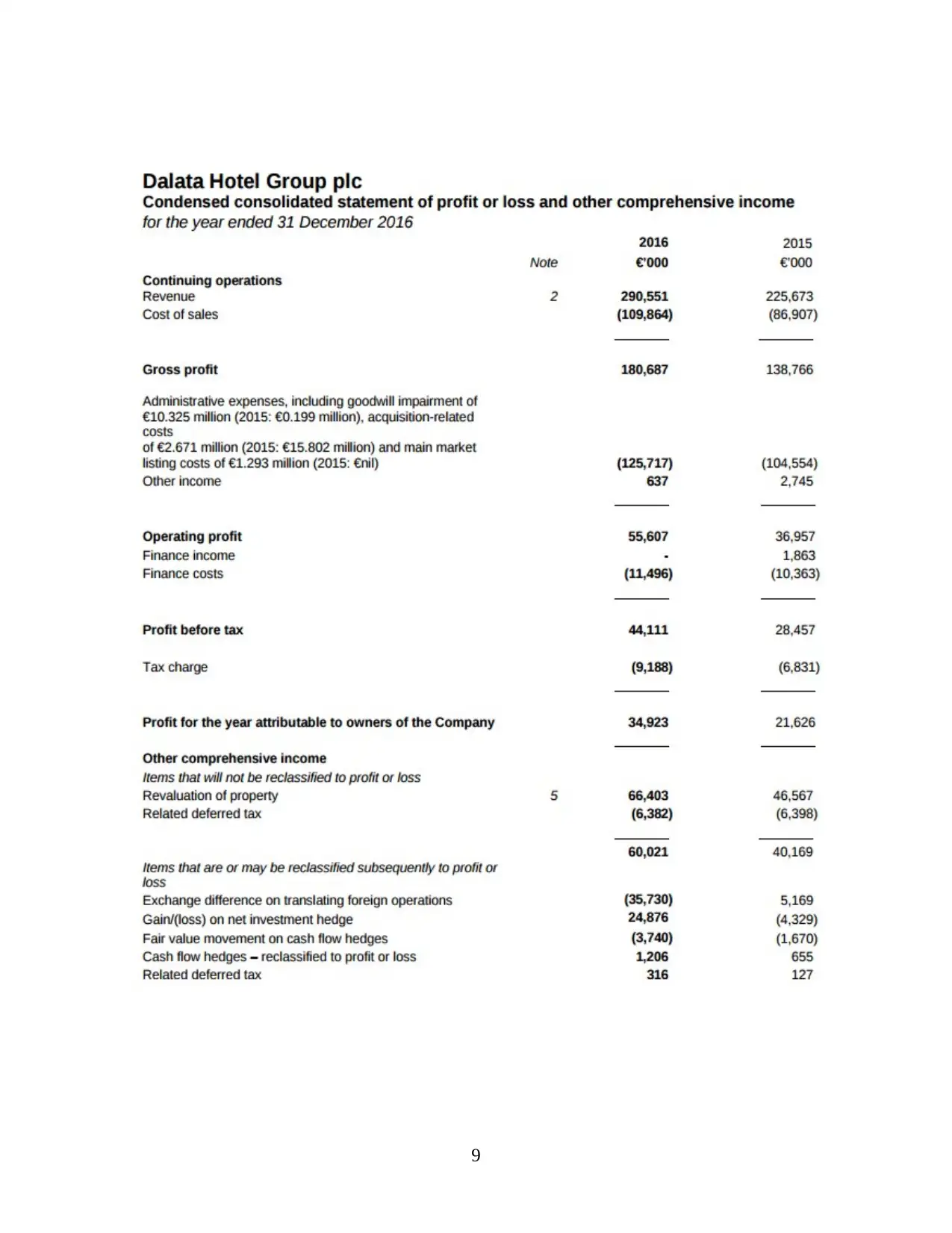
9
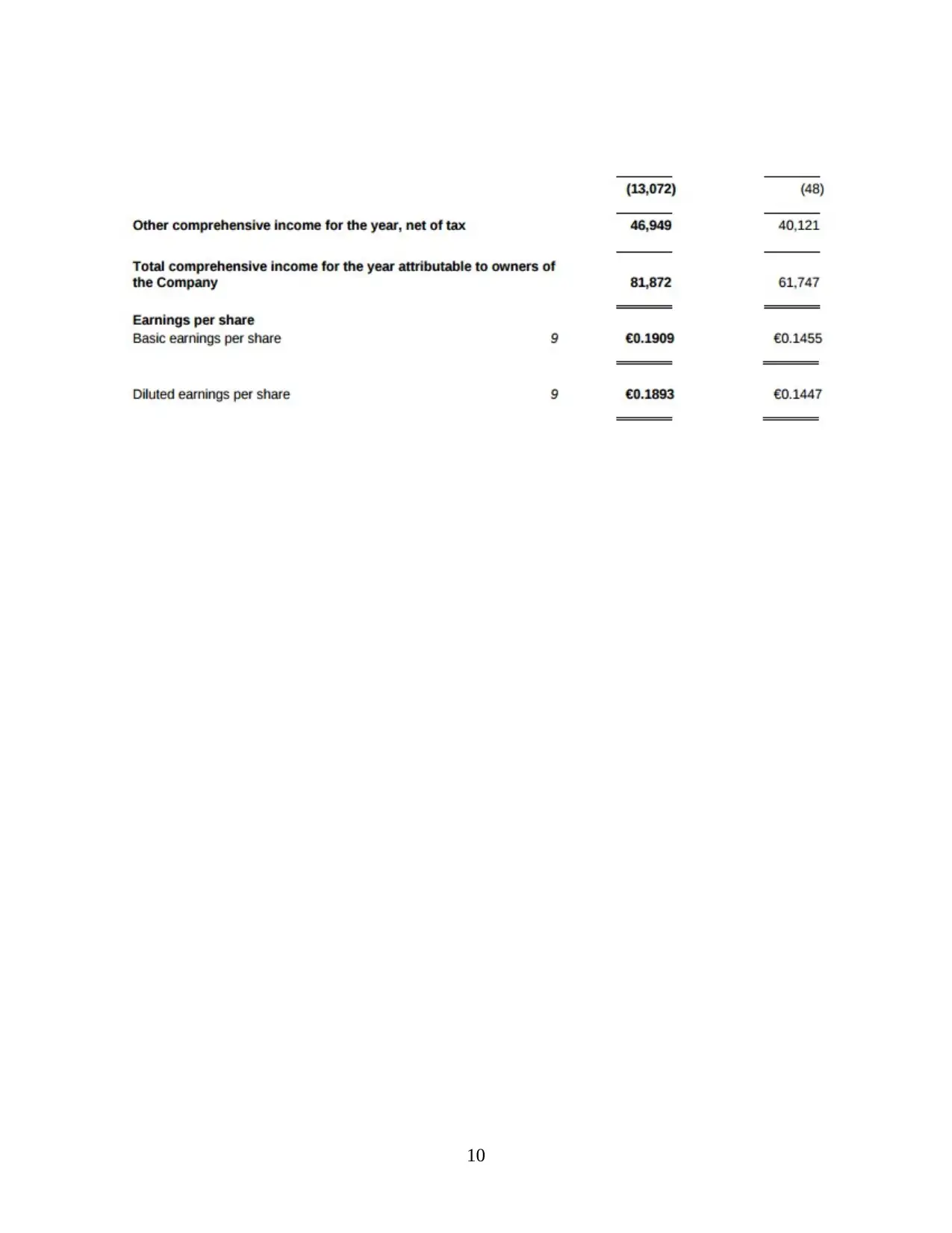
10
⊘ This is a preview!⊘
Do you want full access?
Subscribe today to unlock all pages.

Trusted by 1+ million students worldwide
1 out of 18
Related Documents
Your All-in-One AI-Powered Toolkit for Academic Success.
+13062052269
info@desklib.com
Available 24*7 on WhatsApp / Email
![[object Object]](/_next/static/media/star-bottom.7253800d.svg)
Unlock your academic potential
Copyright © 2020–2025 A2Z Services. All Rights Reserved. Developed and managed by ZUCOL.





